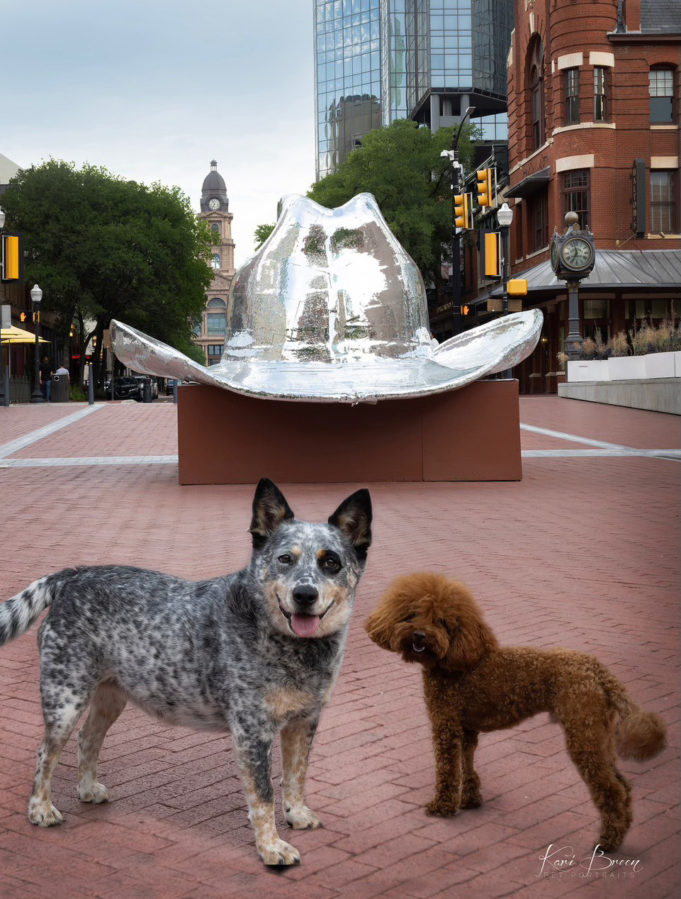Unlike us, cats and dogs only sweat through their paws, so it’s easy for them to overheat. Don’t forget to create a disaster preparedness plan in case of power outages. To keep your pets safe and cool, remember these easy tips from the experts at American Humane:
Limit exercise and time outdoors to cooler parts of the day. In extreme heat, even sitting still outside can be dangerous for pets. Adjust walking schedules and exercise routines to take place in the early morning or evenings. The two pups pictured waited until after sunset to head to Sundance Square, for example. Cool, dog-friendly patios await them all evening!
If it’s too hot for your hand, it’s too hot for their paws. Before taking your dog out, touch the surface of the sidewalk or street with the back of your hand. If the ground is too hot to touch for more than five seconds, it’s unsafe for your pet. Have booties on hand for your pet to wear to protect their paws, or carry them to a patch of grass to relieve themselves.
Know if your pet is at high risk for overheating. Vulnerable populations include breeds with squished faces, like pugs and bulldogs; young, elderly, or overweight pets; and those with thick or dark-colored fur. Take extra precautions to keep your pet cool.
Never leave your pet alone in a car. Leaving a pet in a car for even a short period of time can have a deadly outcome. If you see a distressed dog inside a parked car on a warm day, immediately call your local animal control or law enforcement for help and stay with the animal until help arrives.
Look out for signs of dehydration. Gently pinch the skin over your dog’s shoulder, pull the skin away from its body, and then release it. The skin will slide right back into place if your dog is properly hydrated, but it will remain “tented” or return very slowly if your dog is dehydrated. If you think your dog is dehydrated, take them to your veterinarian immediately.
Know the signs of heat stroke. Signs include excessive panting, lethargy, stumbling, a dark or bright-red tongue or gums, bloody diarrhea or vomiting, and seizures. If you suspect your pet has heat stroke, which can be deadly, bring them immediately to the vet.
Provide temporary relief to an overheated animal. Apply cool (not icy) water on your pet’s skin with either a bath, hose, or sponge until medical assistance can be reached. Offer your dog a bowl of cool water to drink in small servings. If your dog swallows a significant amount of water in a short period of time, it could get sick and end up vomiting. Take them to a veterinarian immediately.
For more information or to support our lifesaving work, please visit www.AmericanHumane.org, follow them on Facebook, Twitter, and Instagram, and subscribe to our channel on YouTube for the latest breaking news and features about the animals with whom we share our Earth.
American Humane is the country’s first national humane organization and the world’s largest certifier of animal welfare, helping to verify the humane treatment of more than one billion animals across the globe each year. Founded in 1877, American Humane has been First to Serve™ the cause of animals and, for nearly 150 years, has been at the forefront of virtually every major advance in the humane movement.
For more pet advice, check out Critter Corner in Creature Comforts 2023.












